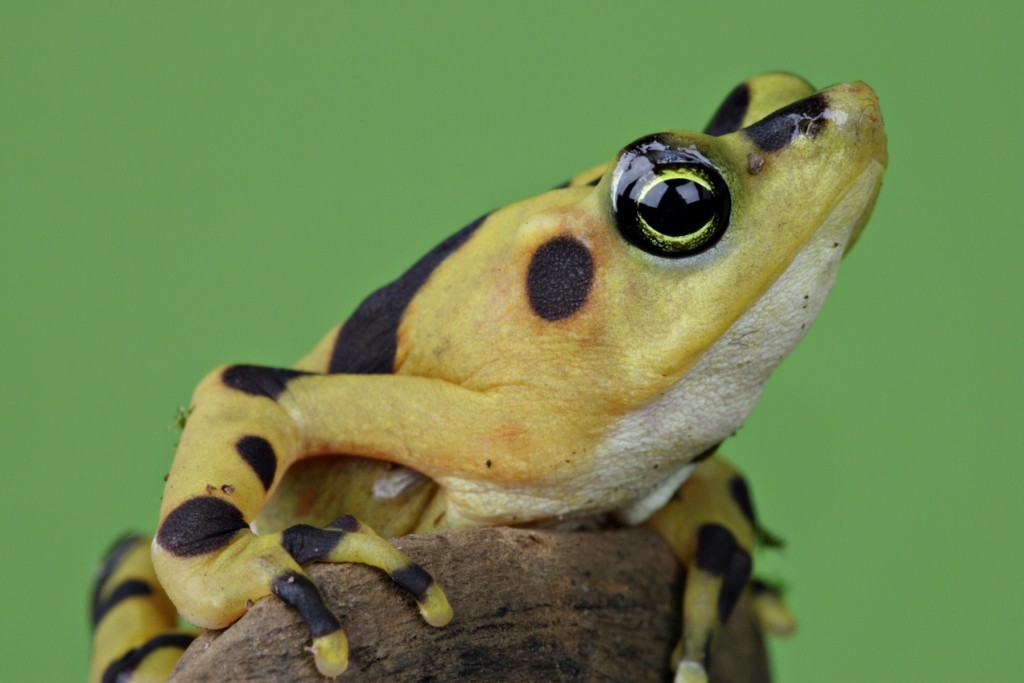
The Panamanian golden frog, now extinct in the wild, was once considered a token of good luck and is now a flagship species for frog conservation. (Photo by Mehgan Murphy, Smithsonian's National Zoo)
Frog lovers (and anyone else who values the planet’s biodiversity) worldwide, rejoice! Last week the National Assembly of Panama passed a law that honors the significance of one of the most striking amphibian species, the Panamanian golden frog. The National Assembly declared August 14, today, National Golden Frog Day and we’re celebrating that important decision, both in the frogs’ native country and abroad.
We’ve written before about how beloved these animals are in Panama, where they appear on lottery tickets, t-shirts and decorative cloth molas made by the Kuna Indians. The overwhelming admiration of these animals has not abated since 2006, when the chytridomycosis disease swept through their home in western Panama, effectively annihilating the species. But all is not lost. Zoos and aquaria in the United States and Panama are carefully managing and breeding a captive population whose offspring will—we hope—be able to survive someday in their native home.
In Panama, golden frogs appear all over, including on lottery tickets, t-shirts and decorative cloth molas made by the Kuna Indians. The actual animals, however, are extinct in the wild. (Photo by Brian Gratwicke, Panama Amphibian Rescue and Conservation Project)
In addition to declaring August 14 National Golden Frog Day, the National Assembly passed a law on August 3 that makes the Panamanian golden frog one of Panama’s official cultural and ecological symbols. This flagship species for frog conservation is part of a narrative that is playing out now in eastern Panama, where we’re focusing our rescue efforts—and the Panamanian government is supporting that work, too. Last year the Autoridad Nacional del Ambiente (ANAM), the Panamanian government agency charged with protecting its biodiversity, joined on as a full financial and logistical partner to our rescue project.
So how can you celebrate today? If you’re in the United States far from the festivities in Panama, head to one of the zoos and aquaria that house these golden treasures, including:
- Smithsonian’s National Zoo
- Buffalo Zoo
- Central Park Zoo
- Cheyenne Mountain Zoo
- Cleveland Metro Parks
- Dallas Zoo
- Denver Zoo
- Houston Zoo
- Maryland Zoo in Baltimore
- Oakland Zoo
- Philadelphia Zoo
- Sedgwick County Zoo
- Woodland Park Zoo
- Zoo Atlanta
- Zoo New England
Be sure to learn more about the Panamanian golden frog, whose beauty is only part of its charm:
- Their skin secretions are the most toxic of all frogs in their taxonomic family, Bufonidae. Those bright colors you see are meant to warn predators that taking a bite out of the frog isn’t such a great idea.
- In addition to a low whistling call, they can communicate by waving their hands to defend their territory or lure a potential mate. Some researchers believe they may even use this to greet one another.
- Golden frog eggs are light-sensitive, so females lay their eggs in dark crevices to keep the light out.
- The Panamanian golden frogs were thought to indicate good luck and would be gathered and placed in people’s homes to ensure the residents good fortune.
- Tadpoles have several rows of teeth that they use primarily to hold on to rocks and a stream bottom when the water picks up after a heavy rain.
Of course, you could always make a donation, big or small, to our rescue project in honor of this day. We’re focused on saving more than 20 other Panamanian frog species that demand quick and careful action if we want to keep them on the planet.
And we most certainly do.
–Lindsay Renick Mayer, Smithsonian’s National Zoo

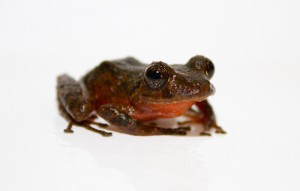
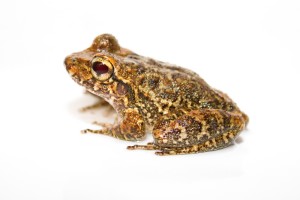
 Keep an open eye in Panama and you might just see a Panamanian Golden Frog. Local legend used to promise luck to anyone who spotted the frog in the wild and that when the frog died, it would turn into a gold talisman, known as a huaca. Nowadays, you’ll see the frogs on decorative cloth molas made by the Kuna Indians, on T-shirts, as inlaid design on a new overpass in Panama City and even on lottery tickets. In the market at El Valle de Antòn, you will see them by the thousands either as enamel-painted terracotta or on hand-carved tagua nuts. The one place you probably won’t see a Panamanian Golden Frog, however, is in their native home—the crystal clear streams of the ancient volcanic crater of El Valle de Antòn. In the mountain forests you may spot other similar-looking extant species such as Atelopus varius, but the only local and true Panamanian Golden Frogs Atelopus zeteki are those breeding in captivity at the El Valle Amphibian Conservation Center (EVACC) at the El Nispero Zoo.
Keep an open eye in Panama and you might just see a Panamanian Golden Frog. Local legend used to promise luck to anyone who spotted the frog in the wild and that when the frog died, it would turn into a gold talisman, known as a huaca. Nowadays, you’ll see the frogs on decorative cloth molas made by the Kuna Indians, on T-shirts, as inlaid design on a new overpass in Panama City and even on lottery tickets. In the market at El Valle de Antòn, you will see them by the thousands either as enamel-painted terracotta or on hand-carved tagua nuts. The one place you probably won’t see a Panamanian Golden Frog, however, is in their native home—the crystal clear streams of the ancient volcanic crater of El Valle de Antòn. In the mountain forests you may spot other similar-looking extant species such as Atelopus varius, but the only local and true Panamanian Golden Frogs Atelopus zeteki are those breeding in captivity at the El Valle Amphibian Conservation Center (EVACC) at the El Nispero Zoo.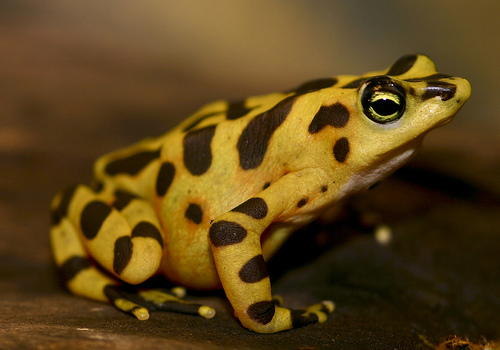 In the early 2000’s conservationists warned that this day-glo yellow emblem of Panama was in grave danger of extinction. In emergency response,
In the early 2000’s conservationists warned that this day-glo yellow emblem of Panama was in grave danger of extinction. In emergency response, 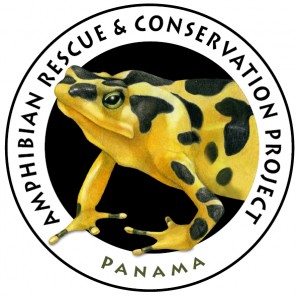 A tragedy has thus been averted. Instead of a dire warning of the future fate of the planet, Panamanian Golden Frogs are now a symbol of hope. Exiled frogs are playing the role of a flagship species, bringing the story of global amphibian declines to world wide audiences in zoos and aquaria, magazines and films. As the logo of the Panama Amphibian Rescue and Conservation Project, the Panamanian Golden Frog is a powerful symbol uniting
A tragedy has thus been averted. Instead of a dire warning of the future fate of the planet, Panamanian Golden Frogs are now a symbol of hope. Exiled frogs are playing the role of a flagship species, bringing the story of global amphibian declines to world wide audiences in zoos and aquaria, magazines and films. As the logo of the Panama Amphibian Rescue and Conservation Project, the Panamanian Golden Frog is a powerful symbol uniting 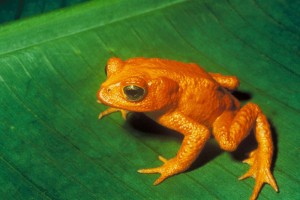 It’s difficult to communicate the extent of the amphibian crisis using only numbers. The 2008 global amphibian assessment lists 120 potentially extinct species and 39 extinct amphibian species. Of these, 94 had chytridiomycosis listed as a likely threat associated with their disappearance. Most of the missing species are from Central and South America, but we are also losing species from North America, the Caribbean, Australia, the Middle East, Asia and Australia.
It’s difficult to communicate the extent of the amphibian crisis using only numbers. The 2008 global amphibian assessment lists 120 potentially extinct species and 39 extinct amphibian species. Of these, 94 had chytridiomycosis listed as a likely threat associated with their disappearance. Most of the missing species are from Central and South America, but we are also losing species from North America, the Caribbean, Australia, the Middle East, Asia and Australia.